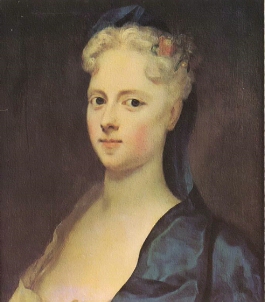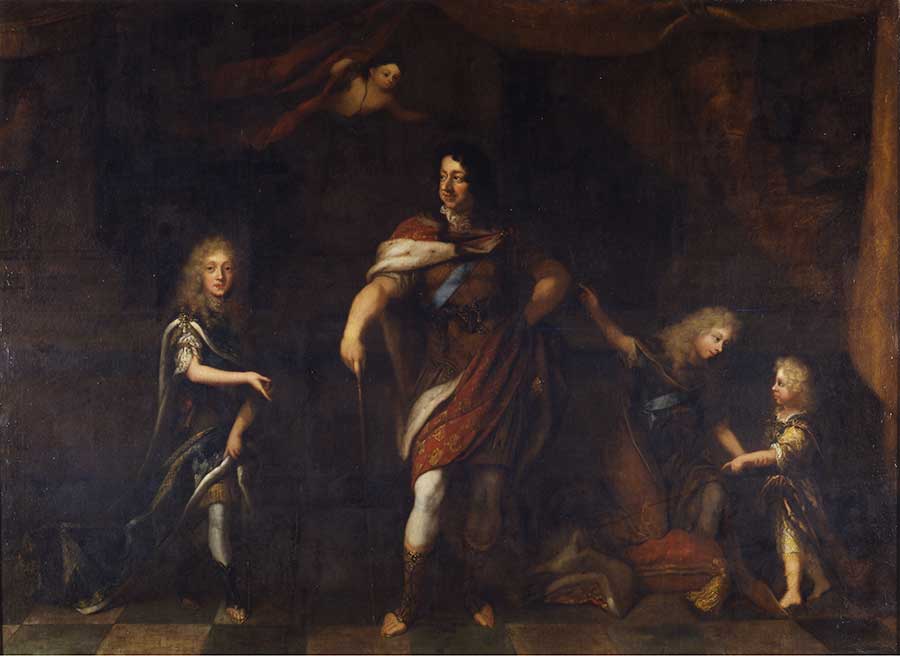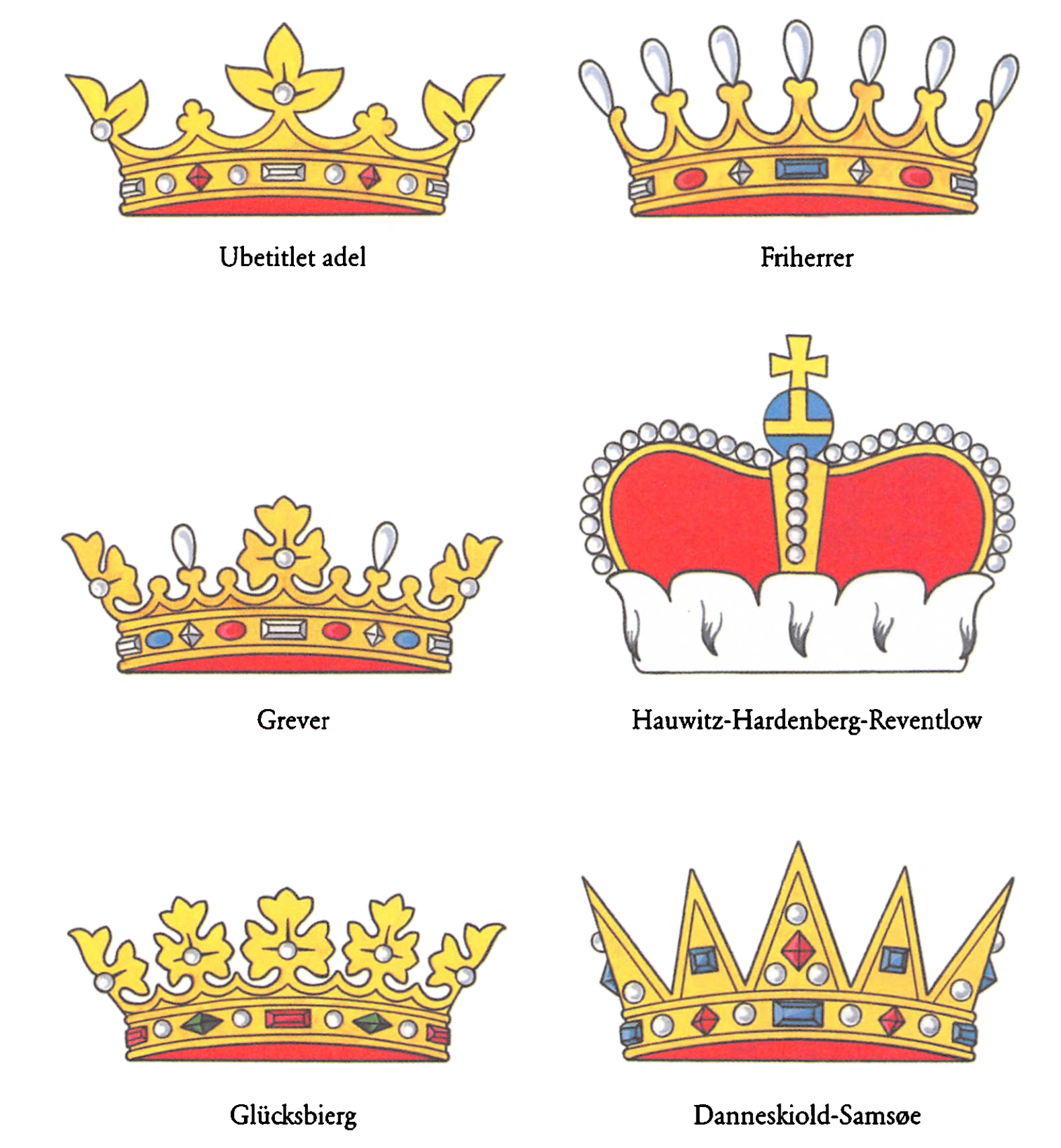|
Reventlow
Reventlow is the name of a Holstein and Mecklenburg Dano-German noble family, which belongs to the Equites Originarii Schleswig-Holstein. Alternate spellings include Revetlo, Reventlo, Reventlau, Reventlou, Reventlow, Refendtlof and Reffentloff. History In 1223, Godescalcus de Revetlo of Holstein was first mentioned in writing. He was vassal of Count Albrecht of Orlamünde and Holstein. In 1236 and 1258, Thitlevus de Revetlow was in Mecklenburg in the wake of the Prince Johann I. In both countries, members of the family were able to gain significant professional and economic positions over time. The old Holstein line, also found from the 14th to the 16th century in Funen, ended in 1752. With the extinction of the Gallentiner branch in 1772, the Mecklenburg branch also ended. Relatives from this branch, however, had previously settled in the Duchy of Schleswig. From Ziesendorf (in Mecklenburg) came Detlef Reventlow, who was appointed chancellor of Christian IV of Denmark ... [...More Info...] [...Related Items...] OR: [Wikipedia] [Google] [Baidu] |
Conrad Von Reventlow
Conrad, Count von Reventlow (21 April 1644 – 21 July 1708) was a Danish statesman who was "Grand Chancellor of Denmark" ( da, Danmarks storkansler), a predecessor title of the Prime Minister of Denmark, from 1699 until his death. His chancellorship occurred during the reign of King Frederick IV. Early life Conrad von Reventlow was the son of Chancellor Ditlev von Reventlow (1660–1664) and his wife, Christine zu Rantzau (1618-1688). He was the brother of chamberlain Count Henning von Reventlow (1640–1705) and Chancellor, Count Ditlev von Reventlow (1654–1701). Military career He attended Academy in Sorø Academy and studied at the University of Orleans (1662). After attending university, Reventlow was called to the Danish Court in 1665, where he rose through various positions of responsibility. In the 1670s, he became a colonel in the Danish military. He recruited a regiment and distinguished himself in the Scanian War (1675–1679). In 1700, Reventlow was deeply in ... [...More Info...] [...Related Items...] OR: [Wikipedia] [Google] [Baidu] |
Anna Sophie Reventlow
Anne Sophie von Reventlow ( da, Anna Sophie; 16 April 1693 – 7 January 1743) was Queen of Denmark and Norway from 1721 to 1730 as the second wife of Frederick IV of Denmark and Norway. Early life Countess Anna Sophie von Reventlow was born in Clausholm castle as the youngest daughter of Count Conrad von Reventlow, who served Frederick IV as Grand Chancellor, and his second wife Sophie Amalie von Hahn (1664-1722). About Anna Sophie's childhood nothing is known apart from the fact that her upbringing was educationally inadequate: Answered letters show that she made clumsy use of Danish, French and German. She was described as beautiful and lively, with "black, fiery eyes." Spouse by bigamy In 1711 the King encountered Anne Sophie at a masquerade ball in Koldinghus, where the royal family resided that season. He wanted her to become his mistress, which her mother refused to allow. The king abducted her on 26 June 1712 from her parents' estate, Clausholm, with the apparent su ... [...More Info...] [...Related Items...] OR: [Wikipedia] [Google] [Baidu] |
Frederick IV Of Denmark
Frederick IV (Danish: ''Frederik''; 11 October 1671 – 12 October 1730) was King of Denmark and Norway from 1699 until his death. Frederick was the son of Christian V of Denmark-Norway and his wife Charlotte Amalie of Hesse-Kassel. Early life Frederick was born on 11 October 1671 at Copenhagen Castle as the eldest son of King Christian V and his spouse Charlotte Amalie of Hesse-Kassel. The newborn prince was baptized the same evening with the name Frederick by the royal confessional Hans Leth. His grandfather King Frederick III had died a year and a half before he was born, and as the eldest son of the ruling king he was thus crown prince from birth. At the age of 18, he was given a seat on the Council of State as the heir apparent to the throne. As crown prince, Frederick broadened his education by travelling in Europe, led by his chamberlain Ditlev Wibe. He was particularly impressed by the architecture in Italy and, on his return to Denmark, asked his father, Christia ... [...More Info...] [...Related Items...] OR: [Wikipedia] [Google] [Baidu] |
Sandbjerg
Sandbjerg is a former estate and manor house north of Sønderborg in the southeast of Jutland, Denmark. The estate dates from 1571, but today's house was built in 1788. Since 1959, the estate has been used by Aarhus University for teaching and research. Today it is the university's conference centre. History Sandbjerg is mentioned for the first time around 1500. In 1564, King Frederick II transferred a third of his properties, including Sandbjerg, to his brother John II, Duke of Schleswig-Holstein-Sonderburg. It remained in the hands of the House of Sonderburg until Christian Adolf's bankruptcy in 1667, when it was returned to the Crown. In 1668 it was sold to the statesman Conrad Reventlow, who established the fiefdom of Reventlow-Sandbjerg. In 1788, Conrad Georg Reventlow (1749–1815) commissioned Christian August Bohlsmann to build a mansion overlooking the Alssund on the east side of Mølle Sø. The park and the tenancy buildings and the mansion now form the Sandbjerg Estat ... [...More Info...] [...Related Items...] OR: [Wikipedia] [Google] [Baidu] |
Brahetrolleborg
Brahetrolleborg is a castle about 10 kilometres north-west of Fåborg on the Danish island of Fyn. Before the Reformation in Denmark, Reformation it was ( da, Holme Kloster; la, Insula Dei), a Cistercian monastery. Holme Abbey The abbey was founded and settled in 1172 from the Cistercian Herrevad Abbey in Scania, now in Sweden, of which it was a daughter house. It was secularised during the Reformation in Denmark, Reformation, probably in 1536. After the abbey was secularised and taken into the possession of the Danish Crown, the Crown released it into private ownership. In 1568 it became the property of Heinrich Rantzau (1526–1598), from whom it acquired for a time the name ''Rantzausholm''. After reverting again to the Crown in 1661, it was granted in 1664 by Frederick III of Denmark, King Frederick III of Denmark to his court favourite, the Germans, German merchant and politician Christoffer Gabel (1617-1673) who exchanged it three years later for the chalk mountain of ... [...More Info...] [...Related Items...] OR: [Wikipedia] [Google] [Baidu] |
Danish Nobility
Danish nobility is a social class and a former estate in the Kingdom of Denmark. The nobility has official recognition in Denmark, a monarchy. Its legal privileges were abolished with the constitution of 1849. Some of the families still own and reside in castles or country houses. A minority of nobles still belong to the elite, and they are as such present at royal events where they hold court posts, are guests, or are objects of media coverage, for example Kanal 4's TV-hostess Caroline Fleming née Baroness Iuel-Brockdorff. Some of them own and manage companies or have leading positions within business, banking, diplomacy and NGOs. Historians divide the Danish nobility into two categories: ancient nobility ( da, uradel) and letter nobility ( da, brevadel) based on the way they achieved nobility. Another status based categorization distinguishes between higher and lower nobility ( da, højadel, lavadel). "Ancient nobility" refer to those noble families that are known from t ... [...More Info...] [...Related Items...] OR: [Wikipedia] [Google] [Baidu] |
COA Family Da-Reventlow Alt
Coa may refer to: Places * Coa, County Fermanagh, a rural community in County Fermanagh, Northern Ireland * Côa River, a tributary of the Douro, Portugal ** Battle of Coa, part of the Peninsular War period of the Napoleonic Wars ** Côa Valley Paleolithic Art, one of the biggest open air Paleolithic art sites * Quwê (or Coa), an Assyrian vassal state or province from the 9th century BC to around 627 BCE in the lowlands of eastern Cilicia ** Adana, the ancient capital of Quwê, also called Quwê or Coa * Côa (Mozambique), central Mozambique People * Eibar Coa (born 1971) Other uses * Coa de jima, or coa, a specialized tool for harvesting agave cactus * Continental Airlines, major US airline * c.o.a., coat of arms * Coa (argot) ( es), criminal slang used in Chile See also * COA (other) * '' Coea'', a genus of butterflies * ''Coua Couas are large, mostly terrestrial birds of the cuckoo family, endemic to the island of Madagascar. Couas are reminiscent of ... [...More Info...] [...Related Items...] OR: [Wikipedia] [Google] [Baidu] |
Conrad Reventlow, Grand Chancellor
Conrad may refer to: People * Conrad (name) Places United States * Conrad, Illinois, an unincorporated community * Conrad, Indiana, an unincorporated community * Conrad, Iowa, a city * Conrad, Montana, a city * Conrad Glacier, Washington Elsewhere * Conrad, Alberta, Canada, a former unincorporated community * Conrad Mountains, Queen Maud Land, Antarctica * Mount Conrad, Oates Land, Antarctica Businesses * Conrad Editora, a Brazilian publisher * Conrad Electronic, a German retailer * Conrad Hotels, the global luxury brand of Hilton Hotels * Conrad Models, a German manufacturer of diecast toys and promotional models Other uses * ''Conrad'' (comic strip) * CONRAD (organization), an American organization which promotes reproductive health in the developing world * ORP ''Conrad'', name of the cruiser HMS ''Danae'' (D44) while loaned to the Polish Navy (1944-1946) See also * Conradi * Conradin * Conradines * Conrads (other) * Corrado (other) * ... [...More Info...] [...Related Items...] OR: [Wikipedia] [Google] [Baidu] |
Augusta Victoria Of Schleswig-Holstein
, house = Schleswig-Holstein-Sonderburg-Augustenburg , father = Frederick VIII, Duke of Schleswig-Holstein , mother = Princess Adelheid of Hohenlohe-Langenburg , birth_date = , birth_place = Dolzig Palace, Brandenburg, Kingdom of Prussia(now Dłużek, Poland) , death_date = , death_place = Huis Doorn, Kingdom of the Netherlands , burial_date = 19 April 1921 , burial_place = Antique Temple, Potsdam, Germany Augusta Viktoria of Schleswig-Holstein (Auguste Viktoria Friederike Luise Feodora Jenny; 22 October 1858 – 11 April 1921) was the last German Empress and Queen of Prussia by marriage to Wilhelm II, German Emperor. Biography Early life and family Augusta Victoria was born at Dolzig Castle, the eldest daughter of Frederick VIII, future Duke of Schleswig-Holstein-Sonderburg-Augustenburg, and Princess Adelheid of Hohenlohe-Langenburg, a great-niece of Queen Victoria, through Victoria's half-sister Feodora. She ... [...More Info...] [...Related Items...] OR: [Wikipedia] [Google] [Baidu] |
Lolland
Lolland (; formerly spelled ''Laaland'', literally "low land") is the fourth largest island of Denmark, with an area of . Located in the Baltic Sea, it is part of Region Sjælland (Region Zealand). As of 1 January 2022, it has 57,618 inhabitants.statistikbanken.dk. People. Population. (Table) BEF4 (Islands). Danmarks Statistik. Retrieved 25 August 2022. Overview Lolland is also known as the "pancake island" because of its flatness: the highest point of the entire island is above sea level, just outside the village of Horslunde. The island has been an important communication highway, among others for Nazi Germany during World War II. Historically, sugar beet has been grown in Lolland. Sugar is still a major industry, visible from the large number of sugar beet fields. The largest town of Lolland is Nakskov, with 12,600 residents. Other main towns are Maribo (6,000 residents), which hosts the seat of the Diocese of Lolland and Falster, Sakskøbing (3,500 residents) and Rødby ... [...More Info...] [...Related Items...] OR: [Wikipedia] [Google] [Baidu] |
Christian V Of Denmark
Christian V (15 April 1646 25 August 1699) was king of Denmark and Norway from 1670 until his death in 1699. Well-regarded by the common people, he was the first king anointed at Frederiksborg Castle chapel as absolute monarch since the decree that institutionalized the supremacy of the king in Denmark-Norway. Christian fortified the absolutist system against the aristocracy by accelerating his father's practice of allowing both Holstein nobles and Danish and Norwegian commoners into state service. As king, he wanted to show his power as absolute monarch through architecture, and dreamed of a Danish Versailles. He was the first to use the 1671 Throne Chair of Denmark, partly made for this purpose. His motto was: ''Pietate et Justitia'' (With piety and justice). Biography Early years Prince Christian was born on 15 April 1646 at Duborg Castle in the city of Flensburg, then located in the Duchy of Schleswig. He was the first legitimate child born to the then Prince Frede ... [...More Info...] [...Related Items...] OR: [Wikipedia] [Google] [Baidu] |






